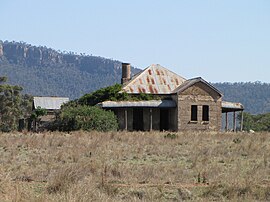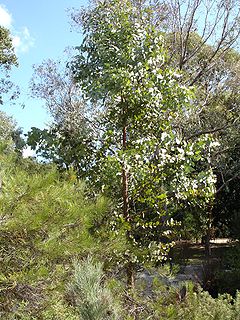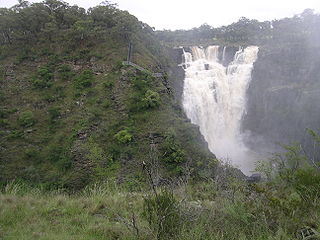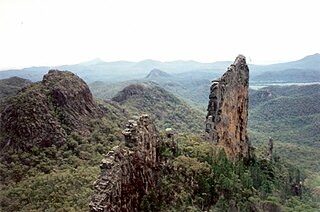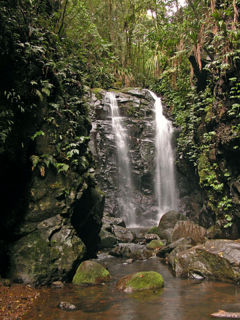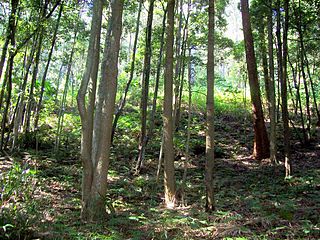| Nangar National Park New South Wales | |
|---|---|
IUCN category II (national park) | |
An abandoned homestead at Murga in front of the cliffs of Nangar National Park, as seen from the Escort Way | |
| Nearest town or city | Eugowra |
| Coordinates | 33°25′32″S148°30′15″E / 33.42556°S 148.50417°E Coordinates: 33°25′32″S148°30′15″E / 33.42556°S 148.50417°E |
| Established | 1983 |
| Area | 94 km2 (36.3 sq mi) |
| Managing authorities | NSW National Parks and Wildlife Service |
| See also | Protected areas of New South Wales |
Nangar is a national park in located New South Wales, Australia, 252 kilometres (157 mi) west of Sydney. The park is located in the Nangar-Murga Range between Eugowra and Canowindra. It features Nangar Mountain, which rises to 778 metres (2,552 ft) AHD .

A national park is a park in use for conservation purposes. Often it is a reserve of natural, semi-natural, or developed land that a sovereign state declares or owns. Although individual nations designate their own national parks differently, there is a common idea: the conservation of 'wild nature' for posterity and as a symbol of national pride. An international organization, the International Union for Conservation of Nature (IUCN), and its World Commission on Protected Areas (WCPA), has defined "National Park" as its Category II type of protected areas.

New South Wales is a state on the east coast of Australia. It borders Queensland to the north, Victoria to the south, and South Australia to the west. Its coast borders the Tasman Sea to the east. The Australian Capital Territory is an enclave within the state. New South Wales' state capital is Sydney, which is also Australia's most populous city. In September 2018, the population of New South Wales was over 8 million, making it Australia's most populous state. Just under two-thirds of the state's population, 5.1 million, live in the Greater Sydney area. Inhabitants of New South Wales are referred to as New South Welshmen.

Australia, officially the Commonwealth of Australia, is a sovereign country comprising the mainland of the Australian continent, the island of Tasmania and numerous smaller islands. It is the largest country in Oceania and the world's sixth-largest country by total area. The neighbouring countries are Papua New Guinea, Indonesia and East Timor to the north; the Solomon Islands and Vanuatu to the north-east; and New Zealand to the south-east. The population of 25 million is highly urbanised and heavily concentrated on the eastern seaboard. Australia's capital is Canberra, and its largest city is Sydney. The country's other major metropolitan areas are Melbourne, Brisbane, Perth and Adelaide.
Contents
Trees consist of eucalyptus, blackpine, scribbly gum and ironbark. Shrubs include spider flowers, thyme spurge, nodding blue lily and waxlip orchids.
Eucalypt is a descriptive name for woody plants with capsule fruiting bodies belonging to seven closely related genera found across Australasia: Eucalyptus, Corymbia, Angophora, Stockwellia, Allosyncarpia, Eucalyptopsis and Arillastrum.
Scribbly gum is a name given to a variety of different Australian Eucalyptus trees which play host to the larvae of scribbly gum moths which leave distinctive scribbly burrowing patterns on the bark.
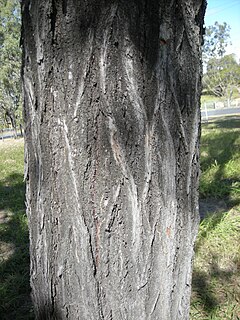
Ironbark is a common name of a number of species in three taxonomic groups within the genus Eucalyptus that have dark, deeply furrowed bark.
Birds recorded include wrens, thornbills, falcons, hawks, peregrine falcons and glossy black cockatoos. Eastern grey kangaroos and grey, redneck and swamp wallabies are common. [1]

The peregrine falcon, also known as the peregrine, and historically as the duck hawk in North America, is a widespread bird of prey (raptor) in the family Falconidae. A large, crow-sized falcon, it has a blue-grey back, barred white underparts, and a black head. It is believed to be the fastest bird in the world. According to a National Geographic TV programme, the highest measured speed of a peregrine falcon is 389 km/h (242 mph). As is typical of bird-eating raptors, peregrine falcons are sexually dimorphic, with females being considerably larger than males. The peregrine is renowned for its speed, reaching over 320 km/h (200 mph) during its characteristic hunting stoop, making it the fastest member of the animal kingdom.
The park was originally established in 1983 when 1,550 hectares of bushland were declared a national park. "Dripping Rock" was added to the park in 1988 and, in 1994, the Nangar State Forest was added to the park to expand its size to 9,196 hectares. "Dripping Rock" was a grazing property established in 1928 and named after a local seasonal waterfall. [2] The original "Dripping Rock" homestead was converted to a shearing shed and a new homestead, built in 1935, was destroyed by a bushfire in September 2009. [3]
